初二語(yǔ)文精選(九篇)
前言:一篇好文章的誕生,需要你不斷地搜集資料、整理思路,本站小編為你收集了豐富的初二語(yǔ)文主題范文,僅供參考,歡迎閱讀并收藏。
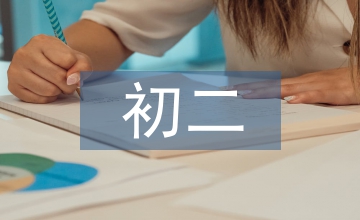
第1篇:初二語(yǔ)文范文
2、體會(huì)語(yǔ)言平實(shí)的特點(diǎn)。
3、了解人物傳記的體裁特點(diǎn)。
4、汲取杰出人物的思想精華。
【練習(xí)】一、填空
1、本單元所選課文,大多是記載、評(píng)述中外名人生平事跡的傳記類(lèi)文章:其中有 ,如《 》,用第一人稱(chēng)敘述了作者自己的生平事跡;有 ,如《 》,以第三人稱(chēng)來(lái)介紹評(píng)價(jià)哥白尼的生平和貢獻(xiàn);有 ,如《 》,以第三人稱(chēng)來(lái)介紹徐霞客的生平和貢獻(xiàn);有 ,如《 》,真實(shí)而又生動(dòng)地刻畫(huà)了梵高的人物形象;有 ,如《 》,以第三人稱(chēng)介紹了鄧稼先不平凡的人生經(jīng)歷和對(duì)國(guó)家、民族的偉大貢獻(xiàn)。
2、人物評(píng)傳在寫(xiě)法上(表達(dá)方式)的重要特點(diǎn)之一就是 ,二者的關(guān)系是 。《哥白尼》一文中第1、2節(jié)主要是 ,第3、4節(jié)是以 為主,5、6兩節(jié)是 。
3、傳記類(lèi)文章有很多種,如:①自傳 ②人物評(píng)傳 ③文學(xué)傳記 ④回憶性散文,下列對(duì)以上體裁的說(shuō)法不妥的一項(xiàng)是( )
A。自傳是敘述自己生平經(jīng)歷的書(shū)或文章。
B、人物評(píng)傳在敘述傳主經(jīng)歷時(shí),還對(duì)人物的思想、成就進(jìn)行評(píng)議,具有很深的學(xué)術(shù)性。
C、文學(xué)傳記相當(dāng)于小說(shuō),可以置真實(shí)事實(shí)于不顧,進(jìn)行大量的虛構(gòu)。
D、回憶性散文(回憶錄)必須是敘述者講述的是自己和傳主親歷、親見(jiàn)、親密接觸的事實(shí)。
4、下列說(shuō)法有誤的一項(xiàng)是( )
A、本單元五篇課文,除《魯迅自傳》外,其他均為他傳。
B、《哥白尼》是人物評(píng)傳。
c、《梵·高傳》是一本傳記文學(xué)作品,但也屬于人物評(píng)傳。
D、《徐霞客和〈徐霞客游記〉》不是傳記文學(xué)作品。
二、閱讀
哥白尼發(fā)表了地動(dòng)學(xué)說(shuō),不但帶來(lái)天文學(xué)上的革命,而且開(kāi)辟了門(mén)科學(xué)向前邁進(jìn)的新時(shí)代。因?yàn)樗麕Ыo人們科學(xué)的實(shí)踐精神,他教給人們?cè)鯓优信f的學(xué)說(shuō),怎樣認(rèn)識(shí)世界。他首先告訴人們不要停止在事物的外表,而要依靠人類(lèi)的實(shí)踐,進(jìn)行全面的分析,深入事物的本質(zhì)。譬如對(duì)天文現(xiàn)象的認(rèn)識(shí),就不能讓直覺(jué)支配,以為太陽(yáng)等恒星都在繞地球轉(zhuǎn)動(dòng),而不去全面地深入地研究太陽(yáng)系內(nèi)全部行星的運(yùn)行。他還啟示人們,不應(yīng)該迷信古書(shū)上的道理,而應(yīng)該重視客觀事實(shí),重視實(shí)驗(yàn)和實(shí)踐;要有勇氣懷疑并且敢于批判不符合實(shí)際卻歷來(lái)被認(rèn)為神圣不可侵犯的學(xué)說(shuō)。 因此,哥白尼的學(xué)說(shuō)不只在科學(xué)引起了空前的革命,而且對(duì)人類(lèi)思想的影響也是極深刻的。哥白尼*了亞里士多德以來(lái)從未動(dòng)搖過(guò)的地球是宇宙的中心、日月星辰都統(tǒng)地球轉(zhuǎn)動(dòng)的學(xué)說(shuō),從而在實(shí)質(zhì)上粉碎了上帝創(chuàng)造人類(lèi)、又為人類(lèi)創(chuàng)造萬(wàn)物的那種荒謬的宇宙觀。不管這些思想在當(dāng)時(shí)人們的心目中是處在多么神圣的地位,哥白尼還是從事實(shí)出發(fā),證明地球和其他行星一樣都按照同一規(guī)律運(yùn)行,為唯物主義的科學(xué)的宇宙觀奠定了基礎(chǔ)。德國(guó)詩(shī)人歌德曾經(jīng)這樣評(píng)論過(guò)哥白尼的貢獻(xiàn):“哥白尼地動(dòng)學(xué)說(shuō)撼動(dòng)人類(lèi)意識(shí)之深,自古以來(lái)沒(méi)有任何一種創(chuàng)見(jiàn),沒(méi)有任何一種友明,可以和它相比。在哥倫布證實(shí)地是球形以后不久,地球?yàn)橛钪嬷髟椎淖鹛?hào),也被剝奪了。自古以來(lái)沒(méi)有這樣天翻地覆地把人類(lèi)的意識(shí)倒轉(zhuǎn)來(lái)過(guò)。因?yàn)榈厍蛉绻皇怯钪娴闹行模敲礋o(wú)數(shù)古人相信的事物將成為一場(chǎng)空了。誰(shuí)還相信伊甸的樂(lè)園,贊美詩(shī)的歌頌,宗教的故事呢?” 1.這兩段的主要內(nèi)容是什么?
2.哥白尼的地動(dòng)學(xué)說(shuō)在科學(xué)的意義是什么?
3第二段是如何分析哥白尼的地動(dòng)學(xué)說(shuō)對(duì)人類(lèi)思想的深刻影響的?
4第二段引用歌德評(píng)價(jià)的作用是什么?
5.第一段中“哥白尼發(fā)表了地動(dòng)學(xué)說(shuō),……怎樣認(rèn)識(shí)世界”這兩句話之間是什么關(guān)系?重點(diǎn)是什么?
6第二段的中心句是什么?闡述的內(nèi)容是圍繞哪一點(diǎn)進(jìn)行的?
7.所選兩段之間的關(guān)系怎樣?它們可顛倒順序嗎?
8選段的主要表達(dá)方式是;選段起始句在結(jié)構(gòu)中的作用是。
9從朗讀的角度上看下列句子的重音應(yīng)在何處,請(qǐng)加點(diǎn)予以表示。①哥白尼發(fā)表了地動(dòng)學(xué)說(shuō),不但帶來(lái)了天文學(xué)上的革命,而且開(kāi)辟了各門(mén)科學(xué)向前邁進(jìn)的新時(shí)代。②哥白尼學(xué)說(shuō)在實(shí)質(zhì)上粉碎了上帝創(chuàng)造人類(lèi)、又為人類(lèi)創(chuàng)造萬(wàn)物的那種荒謬的宇宙觀。
第2篇:初二語(yǔ)文范文
以下是
二、沒(méi)有錯(cuò)別字的是:(3分) [ ]A.殿檐 雛型 喇叭 流璃B.叩門(mén) 湛藍(lán) 含苞 書(shū)藉C.繚繞 驚訝 檀木 肩胛骨D.絢麗 廢事 瞬息 金鑾殿
三、依次填空正確的是:(4分) [ ]1.____如生 2.____然不同 3.井然有____ 4.大肆揮____A.詡詡 迥 緒 霍 B.栩栩 迥 序 霍C.詡詡 炯 緒 惑 D.栩栩 炯 序 惑 四、紅色的字的解釋有誤的是:(4分) [ ]A.韋編三絕(斷絕) 湛藍(lán)(深)B.引人注目(集中) 造詣(成就)C.開(kāi)卷有益(書(shū)本) 玄妙(奇特)D.妃嬪(皇宮的女官) 躍然(跳) 五、畫(huà)橫線的詞語(yǔ)在本句中沒(méi)有反義詞的是:(4分) [ ]A.后三宮和前三殿的布局基本一樣,但莊嚴(yán)肅穆的氣氛減少了,彩畫(huà)圖案也有明顯的變化。前三殿的圖案以龍為主,后三宮鳳凰逐漸增加,出現(xiàn)了雙鳳朝陽(yáng)、龍鳳呈祥彩畫(huà),還有飛鳳、舞鳳、鳳凰牡丹等圖案。B.笨重的簡(jiǎn)牘使用起來(lái)極不方便。帛書(shū)雖然比簡(jiǎn)書(shū)輕巧,但成本太高,不容易普遍采用。C.各種花含有的色素和酸、堿濃度不一樣,隨著養(yǎng)料、水分、溫度等條件經(jīng)常在變化,花的顏色就有深有淺,有濃有淡,有的還會(huì)變色。D.到了近代,隨著造紙工業(yè)的發(fā)展和印刷技術(shù)的提高,印刷花樣翻新,如油印、石印、鉛印、膠板彩印、影印,以及靜電復(fù)印等,于是出現(xiàn)了形形的書(shū)。六、畫(huà)橫線的詞語(yǔ)含有貶義的是:(4分) [ ]A.有一次,他偶然在一味叫做“龍骨”的藥上面,發(fā)現(xiàn)有許多好像文字的東西,他感到驚訝。B.橋的北面是太和門(mén),一對(duì)威武的銅獅守衛(wèi)在門(mén)的兩側(cè)。C.故宮是封建統(tǒng)治的中心,它的建筑是為封建統(tǒng)治者服務(wù)的,明清兩代先后有二十四個(gè)皇帝和一個(gè)女皇盤(pán)踞在這里。D.雕版印刷質(zhì)量差,效率不高,雕刻一套書(shū)版要幾年,而且一部書(shū) 要刻許多塊板,占用大量房舍存放,發(fā)現(xiàn)了錯(cuò)別字也不好改。七、根據(jù)句意,依次填空最恰當(dāng)?shù)氖牵海?分) [ ] 1.人們用萬(wàn)紫千紅的花來(lái)( )生活環(huán)境,用它的形象來(lái)裝飾服裝和用具,把它作為美麗、純潔和幸福的象征。 2.在湛藍(lán)的天空下,那金黃色的琉璃瓦重檐屋頂,顯得格外( )。 A.點(diǎn)綴 輝煌 B.裝點(diǎn) 耀眼 C.美化 美麗 D.改善 漂亮八、對(duì)句子的用途依次判斷正確的是:(4分) [ ] 1.語(yǔ)言也是友誼的橋梁嘛! 2.你能不能舉幾個(gè)例子呢? 3.乾清宮是皇帝日常處理政務(wù),批閱各種奏報(bào)的地方,后來(lái)還在這兒接見(jiàn)外國(guó)使節(jié)。 4.散學(xué)了,——你們走吧。 A.陳述句 祈使句 陳述句 感嘆句 B.祈使句 感嘆句 祈使句 陳述句 C.陳述句 祈使句 感嘆句 陳述句 D.感嘆句 疑問(wèn)句 陳述句 祈使句九、沒(méi)有語(yǔ)病的是(4分) [ ]A.瓢潑大雨淅淅瀝瀝的下個(gè)不停。B.他邁著穩(wěn)健的步子,急匆匆地走出了教室。C.他們先進(jìn)行大掃除,清潔環(huán)境,然后動(dòng)手整理材料。D.故宮集中體現(xiàn)了中國(guó)傳統(tǒng)的建筑藝術(shù)和獨(dú)特的民族風(fēng)格,是中國(guó) 數(shù)千年宮殿建筑藝術(shù)的總結(jié)性杰作。十、對(duì)說(shuō)明方法依次作出正確判斷的是:(4分) [ ]1.昆蟲(chóng)對(duì)花的顏色也是有選擇的。比如蜜蜂就不大喜歡黃色,而喜歡紅色和藍(lán)色。2.還有一種書(shū),插圖都是立體的。打開(kāi)書(shū),書(shū)里的人和動(dòng)物會(huì)站起來(lái), 躍然紙上,栩栩如生。3.藥稍熔,則以一平板按其面,則字平如砥。4.雕版印刷質(zhì)量差,效率不高,雕刻一套書(shū)版要幾年,而且一部書(shū)要刻許多塊板,占用大量房舍存放,發(fā)現(xiàn)了錯(cuò)別字也不好改。活字印刷速度快、質(zhì)量好,制版比較容易,發(fā)現(xiàn)錯(cuò)誤可以隨時(shí)改正,印完,把版拆掉,活字可以繼續(xù)使用。 A.作詮釋 舉例子 作比較 列數(shù)字 B.舉例子 作詮釋 打比方 作比較 C.作比較 打比方 舉例子 作詮釋 D.打比方 作比較 作詮釋 舉例子 十一、下列說(shuō)法正確的是(4分) [ ]A.常見(jiàn)的說(shuō)明順序有:時(shí)間順序、空間順序、邏輯順序。說(shuō)明的時(shí)間順序和記敘的時(shí)間順序相似。空間順序要特別注意弄清空間的位置,注意事物的表面、大小、上下、前后、左右、東南西北等位置和方向。邏輯順序常以推理過(guò)程來(lái)表現(xiàn)。B.《中國(guó)石拱橋》《故宮博物院》是寫(xiě)建筑物的,采用的是空間順序;《死海不死》《統(tǒng)籌方法》《向沙漠進(jìn)軍》是寫(xiě)事理的,采用的是邏輯順序;《從甲骨文到縮微圖書(shū)》《活板》是介紹事物發(fā)展變化的,采用的是時(shí)間順序。C.從說(shuō)明文的類(lèi)型看,《故宮博物院》《活板》是事物說(shuō)明文,《從甲骨文到縮微圖書(shū)》《萬(wàn)紫千紅的花》是事理說(shuō)明文。D.《活板》選自《夢(mèng)溪筆談》。《夢(mèng)溪筆談》是有關(guān)歷史、文藝、科學(xué)等各種知識(shí)的筆記。作者沈括,明朝人。 十二、閱讀回答:(一)花怎么會(huì)有各種美麗鮮艷的色彩呢?這是由于花瓣的細(xì)胞液中存在著色素。有一些花的顏色是紅的、藍(lán)的或紫的。這些花里含的色素叫“花青素”。花青素遇到酸就變紅,遇到堿就變藍(lán)。你可以拿一朵喇叭花來(lái)作實(shí)驗(yàn),把紅色的喇叭花泡在肥皂水里,它很快就變成藍(lán)色,因?yàn)榉试硎菈A性的。再把這朵藍(lán)色的花泡在醋里,它又重新變成紅色,因?yàn)榇资撬嵝缘摹_€有一些花的顏色是黃的、橙黃的、橙紅的。它們的花瓣含的色素叫“胡蘿卜素”。胡蘿卜素最初是在胡蘿卜里發(fā)現(xiàn)的,有六十多種。含有胡蘿卜素的花也是五顏六色的。 白色的花含有什么色素呢?白色的花什么色素也沒(méi)有。它看來(lái)是白色的,那是因?yàn)榛ò昀锍錆M了小氣泡的緣故。你拿一朵白花來(lái),用手捏一捏花瓣,把里面的小氣泡擠掉,它就成為無(wú)色透明的了。(10分) 1.這三段文字的說(shuō)明對(duì)象是:(2分) [ ] A.萬(wàn)紫千紅的花 B.花有各種美麗鮮艷的色彩 C.花瓣的細(xì)胞液中存在著色素 D.花有各種美麗鮮艷的色彩的原因2.將這三段文字分成兩層,正確的是:(2分) [ ] A.①│②③ B.①②│③3.概括兩層的層意。(1分) 第一層:____________________________________________ 第二層:____________________________________________4.前兩段使用了分類(lèi)說(shuō)明的方法,分類(lèi)的標(biāo)準(zhǔn)是什么?這兩類(lèi)有什么 不同?(2分) ____________________________________________________5.第一段中舉喇叭花的試驗(yàn)的例子,說(shuō)明的具體內(nèi)容是什么?用原文回 答。(1分) ____________________________________________________6.第二段中畫(huà)線的句子在表達(dá)上有什么作用?(1分) ____________________________________________________7.第二段中紅色的詞“五顏六色”,改成“萬(wàn)紫千紅”好不好?為什么? (1分) ____________________________________________________ (二)、保險(xiǎn)絲是在電路的火線上串聯(lián)的一段特殊的金屬絲,它能夠保護(hù)導(dǎo)線和電器設(shè)備的安全。當(dāng)人們使用大功率電器時(shí),線路上電流就會(huì)增強(qiáng)。如果用電量超過(guò)了設(shè)計(jì)規(guī)定,保險(xiǎn)絲就會(huì)立即熔化,切斷電源,保障整個(gè)電路安全。當(dāng)電路上火線和地線直接碰在一起,或者一根火線絕緣不好,碰到潮濕的地方時(shí),都會(huì)造成短路。這時(shí)電流不經(jīng)過(guò)電器設(shè)備,因而電流過(guò)大,如不及時(shí)斷電,將損壞設(shè)備,發(fā)生火災(zāi)。此時(shí),保險(xiǎn)絲也會(huì)立即熔化。切斷電路。 那么,保險(xiǎn)絲為什么能保險(xiǎn)呢?原來(lái),保險(xiǎn)絲有個(gè)特點(diǎn),就是熔點(diǎn)低,溫度在200~300℃時(shí),就能熔化。它由鉛銻合金等材料做成,一般是細(xì)絲或薄片模樣。當(dāng)有一股強(qiáng)電流通過(guò)它時(shí),發(fā)出的高熱能使這種合金絲熔化。保險(xiǎn)絲一熔化,電路就被切斷。熔斷時(shí)間長(zhǎng)短同電流大小有關(guān),電流越大,熔斷的時(shí)間越短。保險(xiǎn)絲燒斷怎么辦?先查明保險(xiǎn)絲燒斷原因,排除故障,關(guān)上總電門(mén),換一根同樣規(guī)格的新保險(xiǎn)絲就成了。為了使保險(xiǎn)絲真正起保險(xiǎn)作用,用戶選用它時(shí),應(yīng)該根據(jù)電路上正常通過(guò)的電流大小,來(lái)正確選擇。例如電路上經(jīng)常通過(guò)5.5安培電流,可用額定為6安培的保險(xiǎn)絲。(10分) 1.給這篇短文擬一個(gè)標(biāo)題,要求能體現(xiàn)本文的說(shuō)明對(duì)象,并用上打比方的說(shuō)明方法。(3分) ________________________________________________ 2.概括第一、二段的大意。(2分) 第一段___________________________________________ 第二段___________________________________________ 3.第一、二段的說(shuō)明順序是:(2分) [ ] A.從概括到具體 B.從特點(diǎn)到用途 C.從現(xiàn)象到本質(zhì) D.從結(jié)果到原因 4.本文運(yùn)用了下列說(shuō)明方法,按要求各舉一例。(3分) A.為了具體說(shuō)明用戶應(yīng)該怎樣正確選擇保險(xiǎn)絲時(shí),用了舉事例的說(shuō)明方法,這句是:______________________________________________ B.為了說(shuō)明保險(xiǎn)絲熔點(diǎn)低的特點(diǎn),用了列數(shù)字的說(shuō)明方法,這句是:___________________________________________ C.為了使讀者對(duì)保險(xiǎn)絲有個(gè)清晰明確的認(rèn)識(shí),用了下定義的說(shuō)明方法,這句是:_________________________________________________ 十三、寫(xiě)作 (40分)題目:采集制作××標(biāo)本要求:1.寫(xiě)成說(shuō)明文。說(shuō)明采集和制作所需的材料和用具方法步驟,以及各階段應(yīng)注意的事項(xiàng)。2.說(shuō)明從采集到制作完成的全過(guò)程,按照程度順序安排,層次分明,條理清晰。3.說(shuō)明中至少能恰當(dāng)?shù)倪\(yùn)用兩種說(shuō)明方法。4.字?jǐn)?shù)500—800字。參考答案:一、C 二、C 三、B 四、C 五、D六、C 七、A 八、D 九、D 十、B十一、A十二、(一) 1.D 2.B3.第一層:介紹含有色素的花,說(shuō)明花色和色素的關(guān)系。第二層:說(shuō)明白色的花不含色素,從反面說(shuō)明花色和色素的關(guān)系。4.分類(lèi)的標(biāo)準(zhǔn)是花瓣細(xì)胞液中所含的色素。這兩類(lèi)的不同點(diǎn)是所含的色素不同,紅花、藍(lán)花和紫花所含的色素是“花青素”,黃花、橙紅色花所含的色素是“胡蘿卜素”。5.花青素遇到酸就變紅,遇到堿就變藍(lán)。6.這樣寫(xiě)非常具體,不但突出了白色花與其他顏色的花不同,還引起人們想親自試一試的興趣,印證一下作者的話,使文章的說(shuō)明生動(dòng)活潑,富有情趣。7.不好。因?yàn)楹}卜素有六十多種,不會(huì)形成萬(wàn)、千種花色,而且含胡蘿卜素的花多是黃色、橙黃色、橙紅色,含有花青素的花才是紅色或紫色,所以這里用“萬(wàn)紫千紅”不恰當(dāng)。 (二) 1.電路上的“衛(wèi)兵” 2.第一段:說(shuō)明保險(xiǎn)絲作用。 第二段:保險(xiǎn)絲起保險(xiǎn)作用的原理。 3.D 4.A.例如電路上經(jīng)常通過(guò)。5.5安培電流,可用額定為6安培的保險(xiǎn)絲。 B.保險(xiǎn)絲有個(gè)特點(diǎn),就是熔點(diǎn)低,溫度在200~300℃時(shí),就能熔化。 C.保險(xiǎn)絲是在電路的火線上串聯(lián)的一段特殊的金屬絲,它能夠保護(hù)導(dǎo)線和電器設(shè)備的安全。
第3篇:初二語(yǔ)文范文
本學(xué)期我擔(dān)任八年級(jí)2班的語(yǔ)文教學(xué)工作,本班共有學(xué)生42人,隨著年齡的增長(zhǎng),青春期生理和心理的影響及社會(huì)諸多因素的影響,厭學(xué)的學(xué)生逐漸多起來(lái),但大多數(shù)學(xué)生學(xué)習(xí)還比較努力,有上進(jìn)心。在教學(xué)中,我認(rèn)真教學(xué)、積極鉆研、創(chuàng)新思想與方法,現(xiàn)將本期的工作體會(huì)總結(jié)如下:
一、用全新的教育教學(xué)理念,改革課堂教學(xué)
實(shí)施新課程改革以來(lái),我反復(fù)學(xué)習(xí)有關(guān)的教育教學(xué)理論,深刻領(lǐng)會(huì)新課標(biāo)精神,認(rèn)真反思自身教學(xué)實(shí)際,研究學(xué)生,探究教法,樹(shù)立起以學(xué)生的終身發(fā)展為目的的教學(xué)思想,樹(shù)立起以教師為主導(dǎo),學(xué)生為主體的新的教學(xué)理念,在教學(xué)實(shí)踐中積極探索煥發(fā)語(yǔ)文課堂活力,有助于學(xué)生能力提高與發(fā)展的語(yǔ)文課堂教學(xué)的新思路、新模式,探索以啟發(fā)思維訓(xùn)練方法為主的自讀課文閱讀方法、以感知――探究――反思――延伸為主線的重點(diǎn)篇目學(xué)習(xí)法、以合作――探究――創(chuàng)造――創(chuàng)新為核心的語(yǔ)文活動(dòng)課等,激發(fā)了學(xué)生學(xué)習(xí)語(yǔ)文的積極性,收到了較好的教學(xué)效果。
二、用生動(dòng)靈活的教學(xué)方式,煥發(fā)課堂活力
應(yīng)試教學(xué)課堂圍繞知識(shí)目標(biāo)而展開(kāi),儲(chǔ)存繼承前人積累下來(lái)的經(jīng)驗(yàn)和體驗(yàn),但忽視了學(xué)生創(chuàng)新的動(dòng)機(jī)、興趣、情感、意志,如何激活所需的先前經(jīng)驗(yàn),萌動(dòng)學(xué)生的求知欲望就成為課改中面臨的新的挑戰(zhàn)。新課標(biāo)要求我們建立以自主、合作、探究為主的教學(xué)模式,激活學(xué)生好奇心,探究欲,培養(yǎng)學(xué)生主動(dòng)思考、質(zhì)疑、求索以及善于捕捉新信息的能力,并把這種能力的培養(yǎng)定為課堂教學(xué)的終極目的。為此,我仔細(xì)研究教育心理,準(zhǔn)確把握八年級(jí)學(xué)生的心理特征和思維特點(diǎn),積極探索有利于激發(fā)興趣、激活思維、激勵(lì)探討的課堂教學(xué)方法。例如在處理每單元的重點(diǎn)篇目時(shí),我始終采用整體感知――合作探究――反思質(zhì)疑――拓展延伸的教學(xué)模式,根據(jù)不同內(nèi)容精心設(shè)計(jì)問(wèn)題,組織課堂教學(xué)。
這樣教學(xué),課堂上感受到的是一種親切、和諧、活躍的氣氛。教師已成為學(xué)生的親密朋友,教室也轉(zhuǎn)變成為學(xué)生的學(xué)堂,學(xué)生再也不是僵化呆板、默默無(wú)聞的模范聽(tīng)眾。他們的個(gè)性得到充分的展現(xiàn)與培養(yǎng):或質(zhì)疑問(wèn)難,或浮想聯(lián)翩,或組間交流,或挑戰(zhàn)權(quán)威。師生互動(dòng),生生互動(dòng),組組互動(dòng),環(huán)境互動(dòng),在有限的時(shí)間內(nèi),每一位學(xué)生都得到了較為充分的鍛煉和表現(xiàn)的機(jī)會(huì)。教室中再?zèng)]有陰暗冰冷的“死角”,課堂上充滿著流動(dòng)的陽(yáng)光,平等、和諧與交流共存,發(fā)現(xiàn)、挑戰(zhàn)與沉思同在。活躍的思維,頻動(dòng)的閃光點(diǎn),讓學(xué)生成為課堂上真正的主人。教師的授課既源于教材,又不唯教材。師生的情感與個(gè)性融在其中,現(xiàn)實(shí)的生活進(jìn)入課堂,學(xué)生在互動(dòng)中求知,在活動(dòng)中探索,既輕松地掌握了知識(shí),又潛移默化地培養(yǎng)了能力。學(xué)生的整體素質(zhì)有了質(zhì)的提高,語(yǔ)文課堂真正煥發(fā)出它應(yīng)有的活力。
三、用自主與探究解放學(xué)生,提高學(xué)習(xí)效率。
新課標(biāo)對(duì)語(yǔ)文課程的基本要求,也就是語(yǔ)文學(xué)科工具性與人文性特點(diǎn)的集中體現(xiàn)。
教學(xué)中,一改過(guò)去課堂上過(guò)于注重知識(shí)傳授,內(nèi)容上過(guò)于注重書(shū)本知識(shí),結(jié)構(gòu)上過(guò)于強(qiáng)調(diào)學(xué)科本位,實(shí)施中過(guò)于強(qiáng)調(diào)接受學(xué)習(xí),死記硬背,機(jī)械訓(xùn)練等狀況,仔細(xì)研究教材內(nèi)容,精心設(shè)計(jì)教學(xué)環(huán)節(jié),將學(xué)生從原有的課堂圈子中“解放”出來(lái),調(diào)動(dòng)學(xué)生學(xué)習(xí)的積極性,使他們能夠在自主探究與交流的過(guò)程中,不斷挑戰(zhàn)自我,擴(kuò)展創(chuàng)造性思維。
四、以閱讀教學(xué)為教學(xué)重點(diǎn),達(dá)到相應(yīng)的學(xué)習(xí)目標(biāo)。
1.融入自己的生活體驗(yàn),感悟課文的思想內(nèi)涵,進(jìn)而了解社會(huì)人生;繼續(xù)了解敘事性作品的文體特征,品味含意豐富的語(yǔ)句。
2.加強(qiáng)了朗讀,注意課文中的聯(lián)想與想像,了解直接抒情與間接抒情的表達(dá)方式,學(xué)習(xí)抒情性語(yǔ)言。
3.在理解課文內(nèi)容、熟悉科學(xué)文藝作品特點(diǎn)的同時(shí),引導(dǎo)學(xué)生樹(shù)立起環(huán)保意識(shí)。
4.學(xué)生了解了民生和民間文化。不僅感覺(jué)到自身日常生活中蘊(yùn)含的無(wú)窮樂(lè)趣,還體會(huì)到了多種表達(dá)方式綜合運(yùn)用產(chǎn)生的藝術(shù)效果。
5.在優(yōu)美的古文中漫步,在大致讀懂課文的基礎(chǔ)上,結(jié)合自己的體驗(yàn)評(píng)價(jià)作品的思想內(nèi)容;了解古人寫(xiě)景、敘事、議論的藝術(shù),體會(huì)語(yǔ)言運(yùn)用的妙處;積累了常見(jiàn)的文言詞語(yǔ),增強(qiáng)了語(yǔ)感。
6.在借助提示、注釋和工具書(shū)讀懂課文的基礎(chǔ)上,體會(huì)游記散文借景抒情的特點(diǎn);品味了古詩(shī)文名句的思想感情,并結(jié)合親身體驗(yàn)加深了理解。
五、用扎實(shí)多樣的訓(xùn)練,培養(yǎng)學(xué)生的語(yǔ)文實(shí)踐能力
死教書(shū)、教死書(shū)不能適應(yīng)社會(huì)對(duì)教育的需要,新課程改革正是對(duì)今天教師教學(xué)觀念的挑戰(zhàn)。教師應(yīng)由知識(shí)的占有者轉(zhuǎn)化為知識(shí)的組織者,由知識(shí)的傳遞者轉(zhuǎn)化為學(xué)習(xí)的促進(jìn)者,超越課堂的藩籬,將現(xiàn)代教學(xué)過(guò)程演化為“培養(yǎng)學(xué)習(xí)者”的過(guò)程,實(shí)現(xiàn)由“授之以魚(yú)”到“授之以漁”的根本轉(zhuǎn)變。用扎實(shí)多樣的訓(xùn)練,多方面提高學(xué)生的語(yǔ)文素養(yǎng),努力培養(yǎng)學(xué)生的語(yǔ)文實(shí)踐能力,使學(xué)生獲得一定的終身學(xué)習(xí)的本領(lǐng)。對(duì)八年級(jí)的學(xué)生而言,方法要比知識(shí)更為重要,教授方法才是教學(xué)的根本。
為此,我針對(duì)不同的知識(shí)板塊,采取不同的訓(xùn)練方法:夯實(shí)基礎(chǔ)――生字書(shū)寫(xiě)與名篇名句抄寫(xiě)或默寫(xiě)每日一文,字詞聽(tīng)寫(xiě)“循環(huán)放映”;擴(kuò)大積累――課外閱讀每日一段,讀書(shū)筆記(摘記)天天都寫(xiě);訓(xùn)練能力――閱讀理解,從總體方法到解題技巧,系統(tǒng)指導(dǎo),反復(fù)錘煉;作文訓(xùn)練――循序漸進(jìn),小作文依課文內(nèi)容隨堂布置,借“題”發(fā)揮,大作文緊扣課標(biāo)和中考方向力求既有章法,又有創(chuàng)新,鼓勵(lì)學(xué)生放飛思想,大膽發(fā)揮……
教學(xué)有法,教無(wú)定法,從基礎(chǔ)入手到提高能力直至學(xué)以致用,生動(dòng)、活潑,扎實(shí)、系統(tǒng),有序、有恒的訓(xùn)練,使學(xué)生在不同內(nèi)容和方法的相互交叉、滲透和整合中開(kāi)闊了視野,提高了學(xué)習(xí)效率,初步獲得了一些現(xiàn)代社會(huì)所需要的語(yǔ)文實(shí)踐能力。
第4篇:初二語(yǔ)文范文
An Activity
Someone said here Lei Feng comes in March and goes in April. I thought they were wrong. This afternoon the students of our class went to the bus stop to help the drivers clean the buses.
As soon as the bus stopped at the station, a group of students got on it. Some cleaned the windows, some swept the floor, and others cleaned the wall inside. We worked hard while talking and laughing. When we found some coins lying on the floor, we picked them up and gave them to the conductors or the drivers.They were very happy and said, "It is very nice of you."
When I got home, it was five o’clock. I felt a little tired, but I was very happy to have done a good deed.
[初中初二英語(yǔ)作文]:
第5篇:初二語(yǔ)文范文
From the sixteenth of January to the seventh of February is our Winter Holiday. I think everybody did a lot of things in the Winter Holiday. But I didn’t. Let you to listen to my story of Winter Holiday.
I spend a lot of time on the homework.. Every day in my Winter Holiday, I always got up late. Then I listened to the tape, it was nine o’clock. Then I ate breakfast and then I did my homework during the daytime! I’m not very slow but the homework was too heavy!
I’m unlucky on the playing too. I played firecracker but I hurt my finger with the fire. I ‘m careless to kindle the firecracker, so I’m very unlucky.
I still unlucky on my friend’s party. In the morning, I wanted to get up early but I woke up at 10:50. After ten minutes, the party would start! So I only eat a piece of bread then I go to my friend’s home! And I stay at his home for a long time when I came home. My mother and father were very angry and they scolded me!
第6篇:初二語(yǔ)文范文
It was Sunday. Our teacher Mr Zhu led us to a park nearby.Usually we go to the park to spend our holiday. But today we went there to take part in voluntary labour.
We got there at nine o'clock. Mr Zhu divided us into three groups and then we began working.
The students in Group One planted trees and watered flowers. The studentsin Group Two were busy collecting litter left by the tourist. They also cleaned the benches in the park. I was in Group Three. We went to the children's playground and cleaned all the equipment there. We worked very hard.
At about eleven we finished working. We met at the gate of the park. We all felt tired but very happy.
初二英語(yǔ)作文:Beijing Opera
Now let me say something about Beijing Opera. Beijing Opera is very popular in China. It has a history of more than 200 years. During the reign of the Qianlong emperor in the Qing dynasty, Qianlong had a interest in the local opera. In 1790, to celebrate his eightieth birthday, he summoned opera troupes from different places to perform for him in Beijing. Four famous troupes from Anhui province remained in Beijing after the celebration. In 1828, A Hubei troupe came to Beijing and often performed together with the Anhui troupes. The two types of singing mixed together and gradually a new type came into being known as Beijing Opera. Now is the performance. I hope you will like it.
初二英語(yǔ)作文:Why Do We Study English?
English is one of the most widely used languages in the world. It is spoken by nearly three hundred million people: in England, the United States, Australia, Canada and many other countries. It is one of the working languages at international meetings and is more used than the others. It is said that 60 percent of the world's radio broadcasts and 70 percent of the world's mail are in English. Millions of books and magazines are written in English, too. English is really a bridge to knowledge. With the help of English we can learn modern science and technology faster and better form the developed countries. In this way we can serve our country better.
初二英語(yǔ)作文:Spring Festival
The Chinese New Year is called Spring Festival, it usually comes in February. There is a name for each year. It may be called the year of the dog or the year of the monkey. And this year is the year of the cock.
Before the Now Year's Day, the Chinese people usually give their houses a general cleaning. On the last day of the old year, there is a big family dinner. All members of the family try to be present at the meal. On the first day of the new year, people go to visit their relatives and friends. As a rule, children are given some money to buy things they like.
People often have a good time during the Festival.
初二英語(yǔ)作文:How Cities Began
Do you know how cities began?
Long ago, the world had only a few thousand people. These people moved from place to place, hunting animals for food. No one knows how or when these people learned about growing food. But when they did, their lives changed. They began to live near one another. And so the first villages grew. Many people came to work in the villages. The villages grew very big. From there the cities began. joozone.com
When machines came along, life in the villages changed again. Factories were built. More and more people lived near the factories. The cities grew very big.
初二英語(yǔ)作文:Early Rising
Early rising benefits us in many ways.
First, it helps to keep us fit. We all need fresh air. But air is never so fresh as early in the morning. Besides, by taking morning exercises we can improve our health.
Second, it can help us in our studies. In the morning we can learn more quickly.
第7篇:初二語(yǔ)文范文
Yesterday was my birthday and I received a lot of presents.
These presents were packed in coloured paper and two of them were funny and interesting, which impressed me.
My sister sent a bag of present to me. The bag was big and round. I though it was a football. But when I opened it, I saw a clock. The other one was given by my brother. He left me a message, which said my present is lying in your bedroom. When I got to my bedroom, I found a laptop. Oh!Great! I jumped with joy. I know, they Want me to study hard and not to waste time.
I would never forget this birthday.
昨天是我的生日,我收到了很多禮物。
這些禮物都是用彩色紙和他們兩個(gè)都是有趣的和有趣的,這給我留下了深刻的印象。
我的妹妹送了一袋禮物給我。包又大又圓的。我雖然是一個(gè)足球。但是當(dāng)我打開(kāi)它時(shí),我看到一個(gè)時(shí)鐘。另一個(gè)是由我的兄弟。他給我留言,說(shuō)我現(xiàn)在是躺在你的臥室。當(dāng)我進(jìn)入臥室時(shí),我看到了一臺(tái)筆記本電腦。噢!太好了!我高興得跳了起來(lái)。我知道,他們想讓我努力學(xué)習(xí),不要浪費(fèi)時(shí)間。
我永遠(yuǎn)不會(huì)忘記這個(gè)生日。
范文二
My best friend is Xiao Yi. She has short hair. She has two big eyes and a small mouth. She is tall and thin. She lives on the tenth floor of a tall building. There are five people in her family.
Xiao Yi likes to do sports. She likes to play badminton and volley ball. Her favourite color is pink. Her favorite food is fish and vegetables, because they are healthy. Her hobby is reading books and riding a bike. She often plays the computer or goes shopping on the weekend. Sometimes we go to KFC together. We go there by car.
I like my best friend—XiaoYi. We are good friends
我最好的朋友是小易。她有短頭發(fā)。她有兩個(gè)大眼睛和一個(gè)小嘴巴。她又高又瘦。她住在一幢高樓的十樓。有五個(gè)人在她的家人。
第8篇:初二語(yǔ)文范文
My father likes fishing. He always goes fishing with his friends in Autumn.
One day, he took me to fish, too. In autumn, fish have grown up. It is the best season to fish. First, we chose a good place. Then my father helped me put an earthworm onto the fishhook. Afterwards, I threw the fishhook into the river. I waited for a long time. Suddenly, I saw the float sink. I was very happy. I pulled it out of the water but I only saw half of the earthworm. The fish played a trick on me. I was very angry. But my father said to me, it takes time. You need to be more patient. I tried again. A few minutes later, I caught a big fish and I showed it to my father. My father praised me, what a good angler you are!
[有關(guān)初二英語(yǔ)作文]:
第9篇:初二語(yǔ)文范文
A life without a friend is a life without a sun. Friendship is one of the most important things in everyone's life.
Friends are who changes your life just by being a part of it, who makes you believe that there really is good in the world, who convinces you that there really is an unlock door just waiting for you to open it.
When you’re down, friends lift you up. When you lose your way, friends guide you and cheer you on.
So cherish your friend, Do not save your loving speeches.for your friends till they are dead.Do not write them on their tombstones, speak them rather now instead
初二英語(yǔ)作文:Information Age
It's the age of information now and information is very important in the society.we need verious of information to live a normal life.we need to know the lastest news ,listen to the weather forecast,learn about the newly published books and many other things we are interested in and want to know.
There are many way of acquiring information,for example we can watch TV,listen to radio, read newspaper and magazines and go on line which is to most popupar ,convienent and effective way now.
Living in such an age of information,what should we to to face up to the challenge of it?I think we should try our best to learn as much knowledge as we can and try to master the new techonology.
奧運(yùn)英語(yǔ)作文 北京奧運(yùn)第一枚金牌屬于誰(shuí)?
北京奧運(yùn)第一枚金牌屬于誰(shuí)?(Who will win the first gold medal?)
The suspense over who will win the first Olympic medal and in which event is really a interesting thing. Chinese officials are determined to make sure China, as the host country, wins the first gold of the Games. The women's 10m air rifle - which includes two Chinese medal favorites - has its final scheduled at 10:30 am on Aug 9 and should end about 20 minutes later.
If all goes as planned, either reigning gold medalist shooter Du Li or world champion Zhao Yinghui will raise 2008's first gold at the Beijing Shooting Range.
But if Du and Zhao are too far behind in points going into the final, the rumor says, organizers will delay the last ten shots of the final while the weightlifting final goes on as planned so China can secure the gold.
I think the first gold medal must belong to we Chinese, let wait this moment together.
奧運(yùn)英語(yǔ)作文 關(guān)于北京奧運(yùn)會(huì)開(kāi)幕式的
關(guān)于北京奧運(yùn)會(huì)開(kāi)幕式的(About Beijing Olympic Opening Ceremony)
The Olympic Opening Ceremony was an international event and the whole world was watching! The event was held in a stadium designed to seat a large group of people.
The athletes entered the stadium in a specific order. The athletes from Greece entered first in honor of the original Olympics held in Greece. Then, the other athletes followed by nation in the alphabetical order of the host country’s language. The host country’s athletes came last. So for this coming Olympics 2008, the athletes from China will enter the stadium last.
The chief of state of the host country declared the games open, followed by the raising of the Olympic Flag. Music was played and fireworks were set off in salute. Then, doves were released into the air as a symbol of peace. Runners in cross-country relays brought in the Olympic torch. The running of the torch began four weeks before the Olympic ceremony and thousands of runners took part in this. Planes and ships transported the Olympic torch to each country that lies between Greece and the host country. The most exciting moment of the Olympic ceremony was when the torch entered the stadium and lit the Olympic Flame. The Flame was kept burning until the end of the Olympic games.
奧運(yùn)英語(yǔ)作文 關(guān)于北京奧運(yùn)會(huì)閉幕式的
關(guān)于北京奧運(yùn)會(huì)閉幕式的(About Beijing Olympic Closing Ceremony)
The closing ceremony must take place in the stadium after the end of all the events. The flag bearers of the participating delegations and the name-board-bearers enter the stadium in single file. Behind them march the athletes, without distinction of nationality.
The flag bearers then form a semi-circle behind the rostrum.
The President of the IOC and the President of the OCOG mount the rostrum. To the sounds of the Greek national anthem, the Greek flag is hoisted on the flagpole that stands to the right of the central flagpole used for the winners' flags. The flag of the host country is then hoisted on the central flagpole, while its anthem is played. Finally, the flag of the host country of the next Olympic Games is hoisted on the lefthand flagpole to the strains of its anthem.
The mayor of the host city joins the President of the IOC on the rostrum and returns to him the Olympic flag. The president of the IOC then entrusts it to the mayor of the host city of the following Olympic Games. This flag must be displayed in the latter city's main municipal building.
After an address by the President of the OCOG, the President of the IOC gives the closing speech of the Olympic Games, which he ends with these words:
"I declare the Games of the ... Olympiad closed and, in accordance with tradition, I call upon the youth of the world to assemble four years from now at ... to celebrate with us there the Games of the ... Olympiad".
A fanfare then sounds; the Olympic flame is extinguished, and while the Olympic anthem is being played, the Olympic flag is slowly lowered from the flagpole and, unfurled horizontally, carried out of the arena, followed by the flag bearers. A farewell song resounds.
奧運(yùn)英語(yǔ)作文:我最喜歡的中國(guó)射擊運(yùn)動(dòng)員
奧運(yùn)英語(yǔ)作文:我最喜歡的中國(guó)射擊運(yùn)動(dòng)員(The Chinese sport shooter I like best)
The Chinese sport shooter I like best is Wang Yifu who was in terms of Olympic medals one of the most successful sport shooters of all times. He specializes in the 50 m Pistol and 10 m Air Pistol events.
Wang won his first Olympic medal in the Los Angeles games at the age of 23. After this, the Air Pistol event was added to the program, and this is where he has achieved his greatest accomplishments. He won the 1992 gold medal only days after a new medal in the 50 m event. His three attempts to repeat the victory have provided impressive results and very tight duels:
相關(guān)文章閱讀
相關(guān)期刊推薦
-
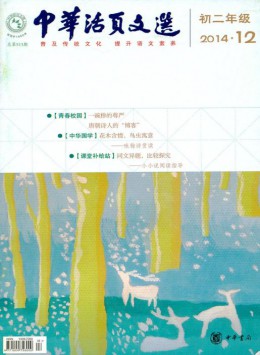
中華活頁(yè)文選·初二年級(jí)
級(jí)別:部級(jí)期刊
榮譽(yù):中國(guó)期刊全文數(shù)據(jù)庫(kù)(CJFD)
-

中學(xué)英語(yǔ)園地·八年級(jí)版
級(jí)別:省級(jí)期刊
榮譽(yù):中國(guó)優(yōu)秀期刊遴選數(shù)據(jù)庫(kù)
-
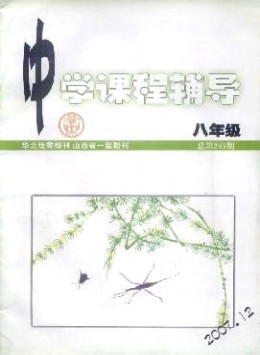
中學(xué)課程輔導(dǎo) · 八年級(jí)
級(jí)別:省級(jí)期刊
榮譽(yù):中國(guó)優(yōu)秀期刊遴選數(shù)據(jù)庫(kù)
-
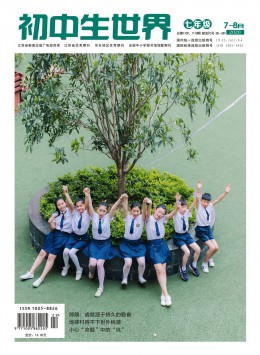
初中生世界 · 初二版
級(jí)別:省級(jí)期刊
榮譽(yù):中國(guó)優(yōu)秀期刊遴選數(shù)據(jù)庫(kù)
-
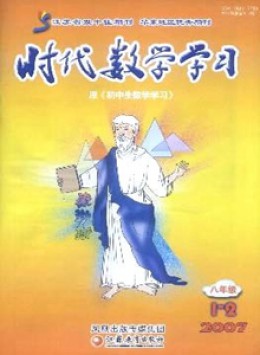
時(shí)代數(shù)學(xué)學(xué)習(xí)·八年級(jí)
級(jí)別:省級(jí)期刊
榮譽(yù):中國(guó)期刊全文數(shù)據(jù)庫(kù)(CJFD)